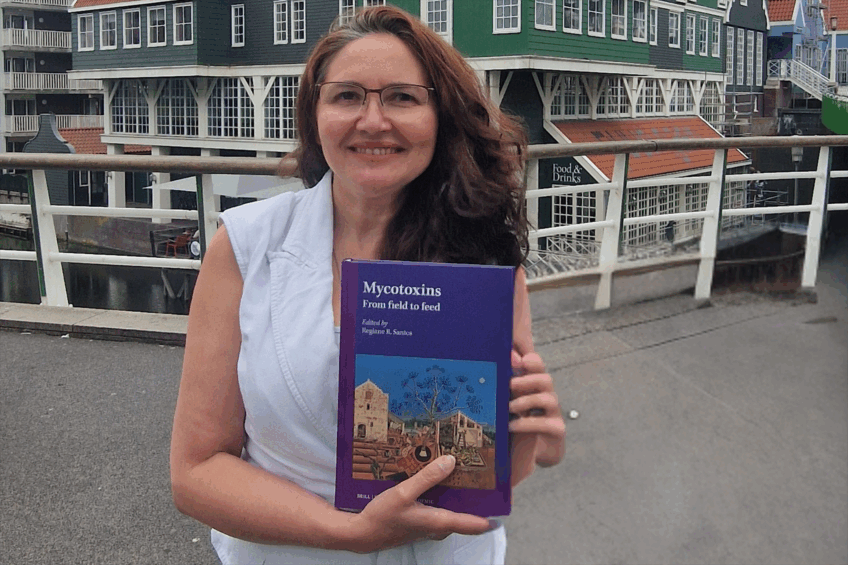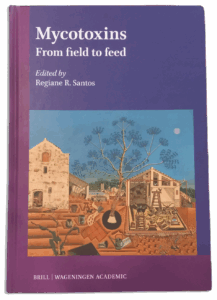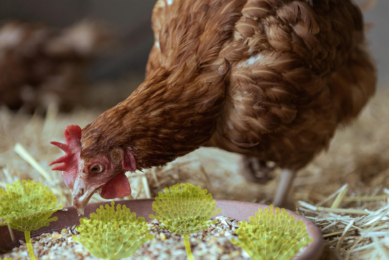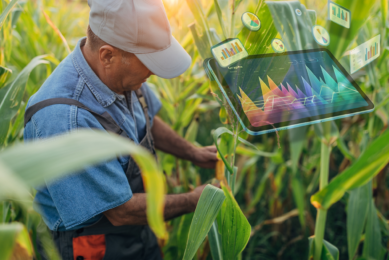From Field to Feed: Dr Santos on tackling mycotoxins and protecting animal health

In this exclusive interview, All About Feed speaks with Dr Regiane Santos about her new book, Mycotoxins: From Field to Feed.
Drawing on years of scientific expertise and industry training, Dr Santos emphasises that managing mycotoxins demands more than isolated solutions. She highlights the often-overlooked risks for companion animals, dispels the myth of a toxin-free diet, and calls for smarter legislation and more effective biomonitoring tools. With clarity and conviction, she champions a holistic, science-driven approach to tackling these invisible threats—and safeguarding animal health across species.
 What motivated you to compile this book on mycotoxins in animal feed?
What motivated you to compile this book on mycotoxins in animal feed?To understand the mycotoxin issue, it is crucial to trace its trajectory from the mycotoxin production until its risk of posing a threat to animal welfare and health. However, the journey from point A to point B is not linear, and there are many factors and actors interfering in this route. Since 2017, I have been giving a one-day training on mycotoxins to veterinarians, nutritionists and industry professionals. The course covers the mycotoxin journey from production to feed contamination, animal exposure, and adverse effects during this intense course.
Since then, I realised that we had many specific books and manuals related to only a fraction of this process, focusing specifically on production, analytical methods, prevention, decontamination, OR animal health, but not all combined.
Additionally farm animals are generally prioritised when assessing the impact of mycotoxin contamination and their impact in the food chain. In contrast, companion animals are typically denied, and their exposure to mycotoxins is only documented during acute mycotoxicosis after a differential diagnosis. Companion animals have a longer lifespan compared to farm animals, meaning that chronic exposure to mycotoxins may be associated with a variety of diseases including cancer.
With this book, I aimed to combine information on the hazards associated with the most often identified mycotoxins, as well as strategies for preventing, detecting, and mitigating them, while also demonstrating how various animal species may respond differently to mycotoxin dietary exposure. It is important to emphasise that this book was prepared in response to enquiries from practitioners and academics, with the intention of being accessible at any moment that one seeks information about mycotoxins.
In addition to the practicality of compiling the most important information in a single book, we will only effectively educate individuals on their role in mitigating and managing the mycotoxin risk when we provide them with the complete and realistic picture.
Mycotoxin contamination is a dynamic process that requires an understanding of the structure and mode of action of these chemical compounds to investigate its deleterious effects on animals, as well as the primary contributing causes of dietary exposure to prevent and manage contamination.
Climate change significantly influences the prevalence and types of mycotoxins in specific geographic regions. It is not possible to reset the climate, but models can be employed to anticipate hazards and take appropriate action at the right moment. Since every topic is connected in a chain, the problem requires a comprehensive and combined approach rather than fragmented information.
No. We need to be realistic when thinking about a mycotoxin-free diet. The feed will always have mycotoxins at varying levels of contamination. For decades, people believed that mycotoxins contaminated 25% of agricultural crops. Although this information was spread citing an FAO report, such a report never mentioned this percentage of contamination. It is noteworthy that the dissemination of this information over an extended period occurred without any trace of its original source, which remains unknown. Most likely, some studies attributed this 25% to mycotoxin levels surpassing the Codex standards. Surveillance studies that detected mycotoxins above the limit of detection (LOD) or limits of quantification (LOQ) revealed a more critical exposure profile, where more than 75% of the feedstuffs contain mycotoxins. On top of that, a diet is not prepared with a single ingredient but with several feedstuffs, each of which is a source of mycotoxin contamination, indicating that chronic daily exposure to a mixture of mycotoxins is common. For example, circa 80% of the diets prepared for poultry or swine will contain one or more mycotoxins. In case these diets are submitted to a broader analysis including mycotoxin metabolites and the still so-called emerging mycotoxins, we can easily say that most of these diets are contaminated with 2 or more mycotoxins.
There is a misperception that exposure to mycotoxins manifests only with acute symptoms. Textbook mycotoxicosis is occasionally observed following exposure to exceptionally high levels of mycotoxins. In contrast, the daily exposure to a combination of moderate or low levels of mycotoxins typically impacts animal health and welfare in a silent manner by decreasing vaccination efficacy or by exacerbating other diseases and infections. In the book, we address this grey area by presenting not only the impact of multi-mycotoxin exposure, but also 2 overlooked issues:
- the effect of mycotoxins on animal susceptibility to diseases and
- the interaction of mycotoxins with other mycotoxins, host microbiota, infections, and veterinary drugs.
It is crucial to highlight that, although the effect of mycotoxins on the gut microbiome population has received recent attention, the next step is to better understand the impact of mycotoxins on antibiotic use and possible triggers for antimicrobial resistance (AMR). Recently, we observed that antibiotic use rises in piglets with bacterial diseases even when their diet includes moderate concentrations of mycotoxins, i.e., less than the maximum recommended levels, during the infection.
The maximum level of aflatoxins is regulated around the world because of its carcinogenic effect and the risk of carry-over from animal products to humans. For the other mycotoxins, there are maximum recommended levels in the feedstuffs and animals’ diets. These maximum recommended levels are based on scientific studies usually focusing on a single mycotoxin. However, advances in analytical methods have led to the detection of more mycotoxins and metabolites in animal feed. As a result, risk assessment to recommend maximum dietary exposure becomes a complex task. Furthermore, almost 38% of the agricultural land is already used for animal feed production, and one of the effects of climate change is the increase in the prevalence of mycotoxin contamination. Rejecting ingredients solely based on mycotoxin levels is not sustainable, as it increases food-feed competition pressure; however, some alternatives are available. For example, not only animal species, but also age and category, might impact the animal’s response to mycotoxin exposure.
To illustrate this: piglets soon after weaning are more susceptible to deoxynivalenol (DON) exposure than growing-finisher pigs, and 14-day-old broiler chickens are more vulnerable to DON-induced intestinal injury than those older than 28 days due to their still immature intestine. Broiler chickens have a lifespan of 5 to 8 weeks, but laying hens may live up to 100 weeks, necessitating research into their susceptibility to mycotoxins during rearing and laying periods throughout peak and late phases of production.
If we identify the risks depending on animal age and category within each species, we may be able to make better use of available feed ingredients.
Despite the significant advancements in detection and analysis techniques in recent years, there are still some bottlenecks.
Mycotoxins are not evenly distributed in feedstuffs, and sampling errors may account for up to 80% of the under- or overestimation of mycotoxin levels. Following the right sample strategy can aid in the accurate identification and quantification of mycotoxins.
When trying to trace back animal dietary exposure to mycotoxins due to a reduced vaccination response, increased susceptibility to diseases, or simply poor growth, the contaminated diet is often already consumed, and no feed samples remain on the farm. Biomonitoring is not a replacement for feed analysis; however, it is an effective method for evaluating animal exposure via blood biomarkers. The problem is identifying the relationship between biomarker levels and feed intake or animal health. Furthermore, the next step in biomonitoring should be to replace blood sampling with non-invasive approaches such as faecal and urine biomarker analysis.
Good management requires knowledge of the risks of mycotoxin exposure and sustainable use of feedstuffs. We urgently need studies on mycotoxin interactions with pathogenic microorganisms and their subsequent impact on antibiotic therapy and AMR. We still do not know if mycotoxins may induce AMR and, if so, if this occurs by simply decreasing animal immunity and increasing antibiotic usage, by affecting gut microbiome dynamics and selecting resistant bacteria, or by interfering with the pharmacokinetics and pharmacodynamics of antibiotics.
Mycotoxins do not share the same chemical structure, toxicity, and mode of action. Therefore, studies must consider the different mycotoxin groups and their combinations. We will not elucidate these processes applying only in vivo or in vitro studies. For this, the development of technological tools combined with artificial intelligence is mandatory to process the available data and to predict critical conditions. When achieving this objective, developed devices will be used to determine the optimal management strategy for a particular situation, such as:
- the availability of feedstuffs for diet formulation and production considering the mycotoxin mixture and levels,
- the animal species, category, age, and health conditions when being fed,
- the appropriate time to add a decontaminant, or the need to reject a feed material and send it for biofuel production.
We prepared this book based on field questions and the scientific expertise of distinguished independent researchers from almost all continents. The decision to integrate topics related to mycotoxins from field to feed within 19 chapters was also influenced by the desire to engage readers from several professional areas and global regions. I hope that universities, feed mills, feed additive companies, and the industry will use this book in their education and training programmes. In addition to providing basic knowledge, this book provides practical assistance in feed material sampling, mycotoxin analysis, detection, prevention, and remediation.
In other words, I hope the readers will always have this book on their desk for constant consultation to improve their understanding of mycotoxin problems and use it as a resource in decision-making.











